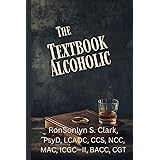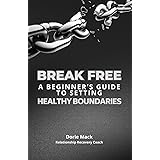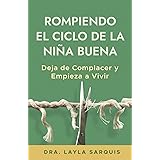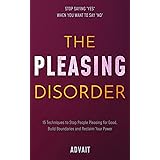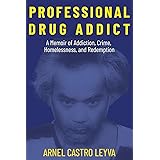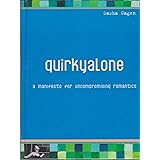The concept of shopping addiction, often referred to as compulsive buying disorder, is a complex behavioral pattern that extends far beyond a simple love for acquiring new items. As highlighted in the accompanying video with Claire Taylor, this condition can lead to severe personal and financial repercussions, culminating in experiences such as bankruptcy and the loss of one’s home. Understanding the nuances of this addiction is crucial for recognizing its signs and addressing its profound impact on individuals.
Defining Compulsive Buying Disorder
Fundamentally, compulsive buying disorder is characterized by an excessive preoccupation with shopping and buying, leading to significant distress or impairment. Unlike recreational shopping, which is often enjoyable and managed, this condition involves an uncontrollable urge to purchase goods, even when these purchases are not needed or are financially irresponsible. Furthermore, the act of buying becomes a primary coping mechanism for dealing with negative emotions or internal voids, as observed in Claire’s narrative.
It is often explained that for individuals experiencing shopping addiction, the thrill is found in the pursuit and acquisition, rather than in the items themselves. Claire’s personal account illustrates this, where she would purchase multiples of items she liked, often in every available color, indicating a pattern of planned yet excessive buying. This is not typically an impulse decision where one indiscriminately buys everything in sight; instead, a specific desire for certain items is amplified into an overwhelming need for redundancy or variety.
The Progression of Addictive Shopping Behaviors
Addictive behaviors frequently manifest early in life, subtly developing over many years before becoming a recognized problem. Claire’s experience provides a compelling illustration of this trajectory, as tendencies to acquire multiples of desired items were present from her childhood. Initially, this involved collecting comics and then records, which gradually evolved into more substantial purchases as she matured.
As individuals transition into adulthood, these behavioral patterns can intensify, often coinciding with increased financial independence and new responsibilities. For instance, the transcript reveals that Claire’s shopping habits escalated significantly after the birth of her first child, where copious amounts of baby clothes were purchased. Such periods of life transition can inadvertently exacerbate underlying addictive tendencies, as shopping becomes an ingrained response to stress, joy, or other significant emotional shifts. Consequently, what began as a benign interest can transform into a detrimental cycle of excessive spending.
The Emotional Underpinnings of Shopping Addiction
A core element of any addiction involves the seeking of a specific emotional “fix” or payoff, and shopping addiction is no exception. As was discussed by the therapist in the video, the overarching objective is frequently to alter one’s current emotional state or to fill an internal void. Claire explicitly articulated this sentiment, noting that her extensive spending, including a distressing £6,000 spree, was primarily driven by a desire to feel good. The actual items purchased often held little significance once acquired; the gratification was derived solely from the act of buying.
This pursuit of emotional relief is a hallmark of addictive behavior. The temporary high or sense of control experienced during a shopping spree provides a fleeting escape from underlying feelings of anxiety, sadness, loneliness, or boredom. However, this relief is invariably short-lived, replaced by guilt, shame, and the compounding stress of financial distress. In essence, the addiction provides a deceptive sense of fulfillment, momentarily distracting from deeper emotional needs that remain unaddressed.
Severe Consequences: Financial Ruin and Beyond
The financial ramifications of compulsive buying are often devastating, extending far beyond typical budgeting challenges. Claire Taylor’s journey serves as a stark warning, culminating in bankruptcy and the loss of her home. Her admission of continually living beyond her means, even resorting to small purchases at budget stores like Primark during severe financial hardship, underscores the persistent grip of the addiction. It is clear that the compulsion to buy transcended the value or necessity of the items themselves; the act of purchasing was paramount.
Furthermore, the consequences of shopping addiction are not limited to monetary loss. Significant emotional distress, including intense feelings of guilt, shame, and regret, is routinely experienced. Relationships with family and friends can also become strained or damaged due to deception, secrecy, and the immense pressure placed on shared finances. The ongoing struggle can lead to social isolation and a diminished quality of life, as the addiction consumes an increasing amount of time, energy, and mental focus.
Recognizing the Signs and Seeking Help
Identifying shopping addiction can be challenging, partly due to the societal normalization of shopping and the subtle progression of the disorder. However, several key indicators can suggest that a person may be struggling. These signs often include consistently spending more money than one can afford, concealing purchases or financial difficulties from loved ones, experiencing a persistent urge to shop despite negative consequences, and feeling a temporary emotional high or relief during shopping that quickly fades.
Moreover, the denial aspect, as mentioned in the video, is a common feature of addiction, where individuals may acknowledge problems but struggle to connect them directly to their shopping habits. Acknowledgment of the problem is the initial, critical step toward recovery. Support for individuals affected by compulsive buying disorder is available through various avenues, including therapy, support groups, and financial counseling. Addressing the underlying emotional triggers and developing healthier coping mechanisms are essential components of the recovery process, enabling individuals to regain control over their lives and finances.




